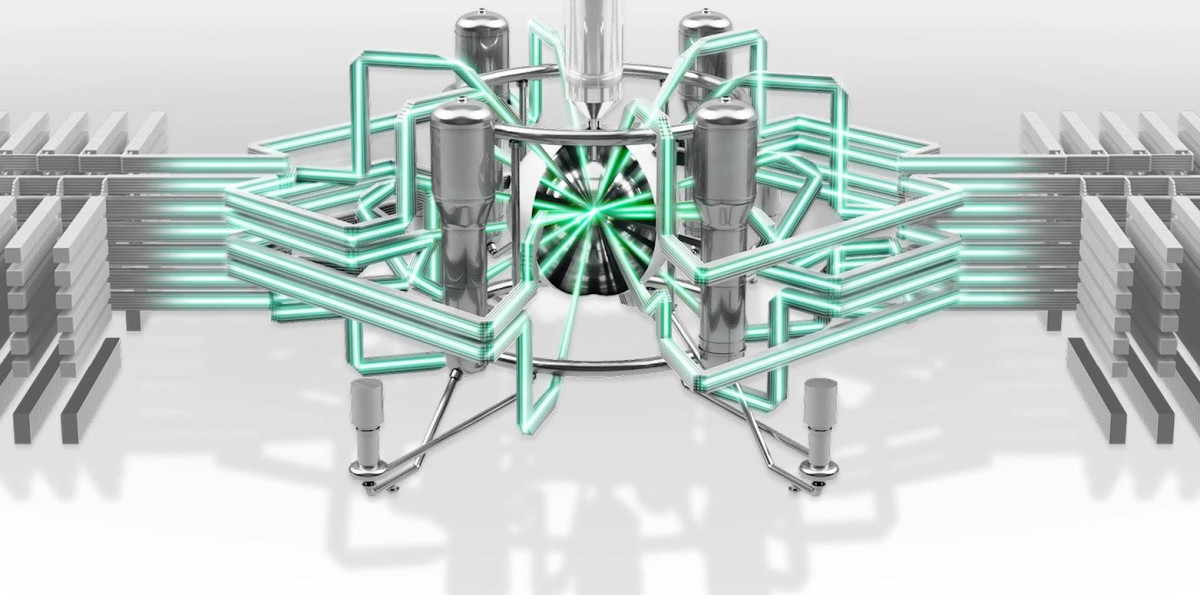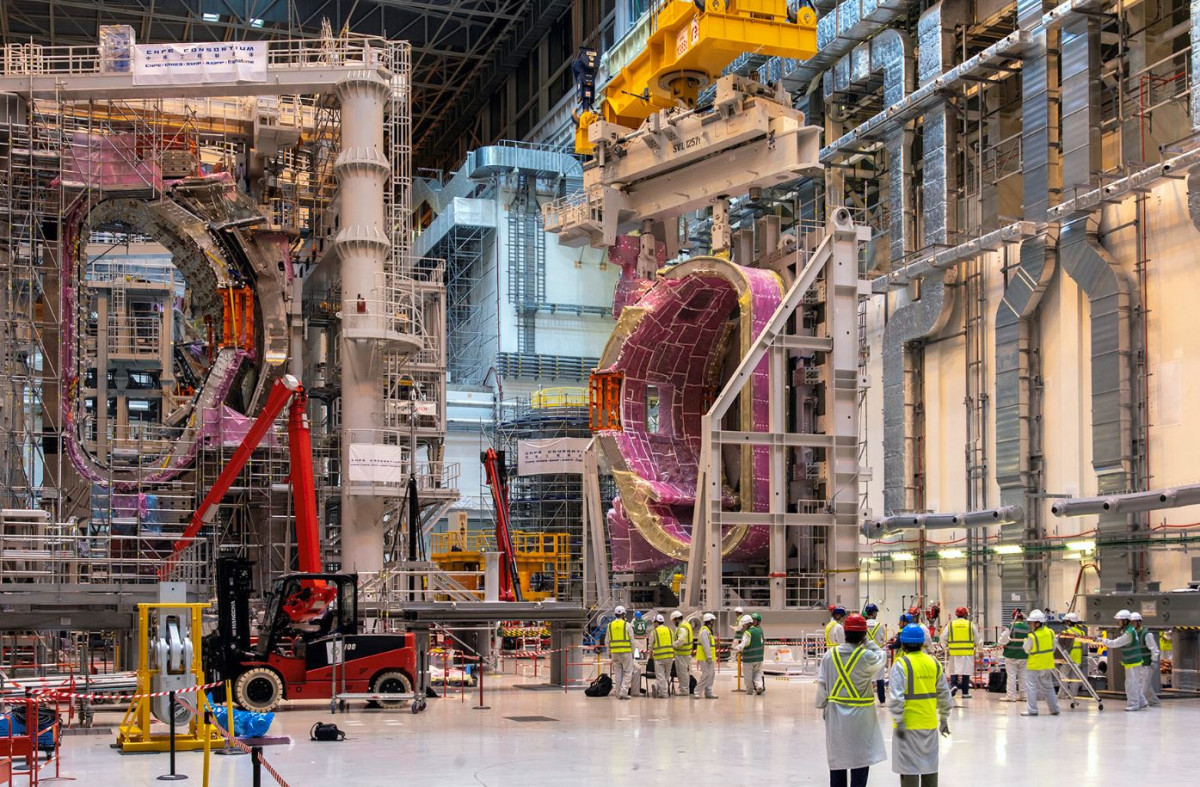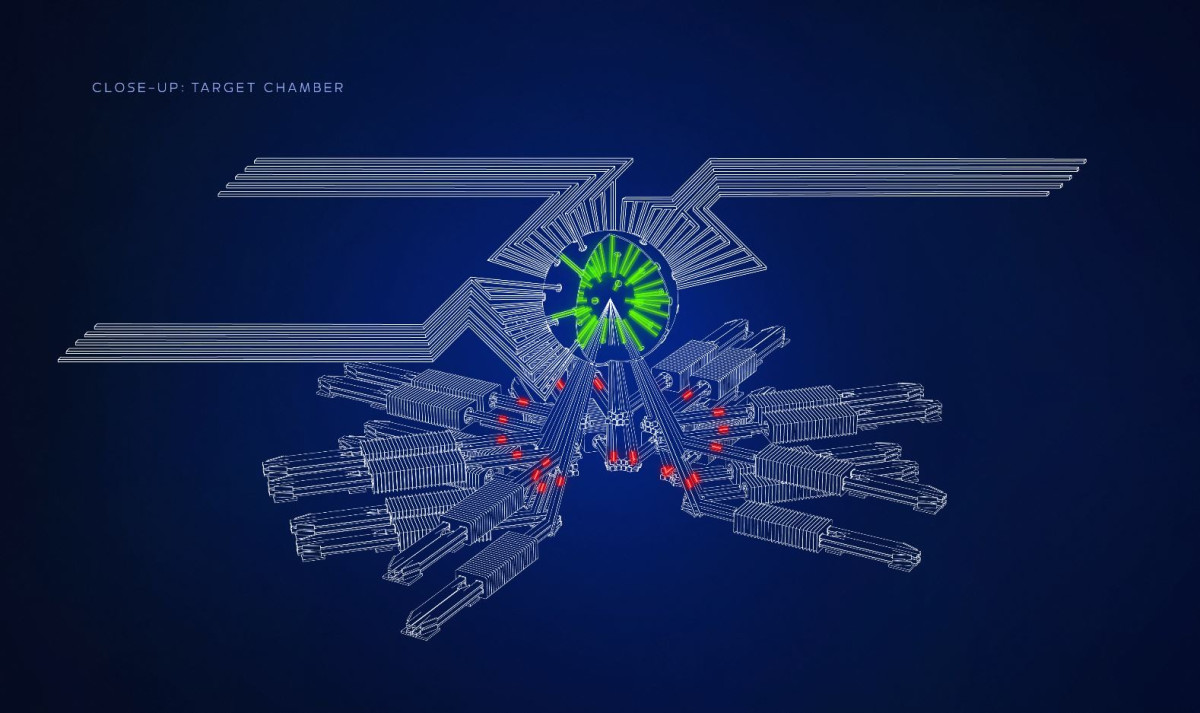Europe must build on nuclear fusion headstart to complement renewables – startup
This text is part of our new package about frontier climate technologies - see our in-depth Q&A: Nuclear fusion - Hype or hope for a cooler planet?
Clean Energy Wire: There are very different players in fusion research – start-ups like Focused Energy, but also the international megaproject ITER in France. How would you characterise the current state of play in the private sector, and how does it differ from government research projects such as ITER?
Markus Roth: ITER is a major experiment, launched in the mid-1980s, as a political statement by Ronald Reagan and Michael Gorbachev. The Cold War was over, and ITER was intended to show how the two superpowers could work together on magnetic fusion. In such huge multinational research endeavours, the amount of time and money can be indefinite. The project has been running since 1986, and the current goal is to generate fusion energy sometime in the 2030s.
These unending large-scale projects, which are simply not being completed, lead to the famous “fusion constant” – the quip that at any given time, market-ready fusion energy is still 30 years away.
But I believe things have fundamentally changed. On the one hand, there are new start-ups that solve problems in a smaller, more compact, and faster way. On the other hand, the private sector approach is new. As a research organisation, you have very limited resources, but an infinite amount of time. As a start-up, you have a lot of resources at best, but you have to hurry. Start-ups are in competition with each other. There are now 40 to 60 start-ups in fusion energy. This means that solutions have to be found quickly, and the diversified approach means that there is a good chance of reaching the goal fast.
The new German government has set itself the target of building the first fusion reactor in Germany. Is this a realistic goal?
In the past, many great technologies were developed in Germany, for example batteries or solar technology, and commercialisation was then left to others. It is great that Germany is setting itself an ambitious goal, and hopefully this will lead to a new departure. It doesn’t matter to me whether Germany is the first country to have a fusion power plant. If the first reactor only supplies 50 megawatts of electricity and then breaks down, little is gained. In that case, we would have been the first, but would still lack a reliable reactor for long term use.
Instead, it is much more important to connect the first economically viable fusion power plant to the grid. In any case, there will be various approaches that will hopefully all lead to success. There are plans to commission two fusion power plants, one based on laser fusion, and another on magnetic fusion. Both concepts are promising. The previous government already set the course for this. This means that we have a cross-party consensus on this issue. That is very reassuring.
How does the state of fusion research in Germany and the EU compare to the US and China?
The global race for fusion energy is already in full swing. The Chinese are very secretive, but satellite photos show that they are building one plant after another, both magnetic and laser fusion projects. The scientific publications from China have improved considerably over the last three years. This is a sign that huge amounts of money are being invested in fusion research in China.
The US has launched a 50-billion-dollar campaign to get fusion energy onto the grid by the end of the 2030s. These funds have not been released yet due to disagreements between Democrats and Republicans. The US has made big announcements, but has not really delivered so far.
In contrast, Germany has not announced much, but has started to heavily promote basic fusion research. This is currently picking up so much momentum that we can say Germany is ahead. That is also the reason why start-ups from the US will come back to Germany.
The current US government is not only being hostile towards other countries, but also towards its domestic scientific landscape. Many fusion researchers in the US are currently thinking about leaving the country. This is a clear opportunity for Germany and Europe that we must use.
Can you briefly describe the Focused Energy approach to nuclear fusion, and how this sets you apart from the competition?
Basically, there are two fundamental approaches to fusion energy generation. One is magnetic fusion, which uses magnetic and electric fields to create the heat and pressure needed to fuse hydrogen atoms. The other is laser fusion, also called inertial fusion, which uses focused light beams for the same purpose.
Focused Energy specialises in laser fusion. Unlike magnetic fusion, laser fusion has been used in the US to demonstrate the feasibility of igniting a fusion reaction that produces more energy than is put in to heat and confine the fuel. Although this is not yet a so-called engineering gain, which considers the entire system including losses in lasers and power conversion systems and so forth, it is proof that this is a process that can provide fusion energy on a net positive basis.
In contrast to the approach used in the US, we are moving from the so-called Indirect Drive to Direct Drive, meaning we focus the laser beams directly onto the target, instead of first converting them into X-rays. We believe that this is a much more efficient process, and that it can generate energy economically.
As a university spin-off, we have taken over the entire target laboratory from the technical university in Darmstadt. Our targets, otherwise known as ‘pellets’, are small spheres, two and a half to four millimetres in size, which are filled with fuel. These targets are ignited using laser bombardment, which then supply the energy. We need around one million of these high-quality pellets per day to reach market maturity. The unit price must not exceed 30-to-40-euro cents per sphere to make it economical.
Fusion research still faces major hurdles like finding suitable materials, and the safe supply of raw materials. What impact can you make as a start-up?
ITER has worked on a whole range of problems in the past, and has also made great progress. However, laser fusion and magnetic fusion differ in many areas. Many problems that still need to be solved in ITER do not exist in laser fusion.
Let me give you an example. At ITER, they place the coldest point in the solar system - around minus 270°C, a mere 4°C above absolute zero, which is needed to cool superconducting magnets - and the hottest point in the solar system - at 150,000,000°C in the plasma - within a metre of each other. This is obviously an enormous temperature gradient, and it must be maintained. Finding suitable materials withstanding these temperatures is very difficult.
We do not have this problem in laser fusion. Our reactor works at 500 to 600 degrees Celsius, so we do not need efficient heat protection. Our reactor has a much simpler design than a magnetic fusion reactor, so we can have much greater variability in the materials. For us, the major technological challenge is the reliability of the laser systems, which we use hundreds to thousands of. However, building a single laser system is a technological challenge that can be solved by the German optics industry. Mass producing the system is an economic task. It is not a fundamental technological or scientific problem, but a question of ramping up supply chains.
Fusion energy is often advertised as being able to provide sustainable base load electricity. However, our current energy system will change in the coming years. The share of renewable energy will increase further, and more energy storage facilities will be built. Could fusion energy be superfluous by the time it reaches market maturity?
In a highly volatile system, huge fluctuations can occur, for example a week of Dunkelflaute – with no wind and sun. To compensate for this with storage, we would need 500 times Germany's largest pumped hydro storage power plant. This problem will become even more acute if we phase out coal and baseload gas-fired power plants.
Compensating for such fluctuations would be very expensive, and lead to strongly fluctuating electricity prices. This is a financial problem for industry, which consumes energy on a continuous basis, for example to maintain a glass smelter. In the end, it will be more of a market problem.
We also need to look where energy demand in Germany and elsewhere is heading. By the mid-2030s, a third of Germany's electricity consumption will be attributable to data centres, and that does not include AI. If we also switch all heating systems to heat pumps and electrify all cars, the expansion of renewables will be nowhere near enough.
In addition, Germany is an export nation and world trade is facilitated by ship. Probably the only way to decarbonise transport is with the help of synthetic fuels. Around 300 to 500 gigawatts of power plant capacity will be needed to cover shipping’s foreseeable synthetic fuel demand in Northern Europe and North America alone. This does not even include air transport.
It will not be possible to cover this with wind energy. All the good locations for wind energy are gradually being taken. Taller wind turbines can be built, and old ones can be replaced with new ones, that all makes sense. Of course, we need to expand renewables now. But that will not be enough. Fusion energy will become particularly relevant in the second half of the 21st century, because it is the first technology to decouple resource consumption from energy production.
Will the synthetic fuels produced with fusion energy be cheap enough to compete with those made in places with abundant solar energy, such as the global South?
Yes. The fuel, hydrogen for example, still has to be transported. Energy is needed to cool down the hydrogen, and to fuel the transport ship. In our studies on the cost of electricity provided by mature laser fusion power plants, we arrive at five to ten cents per kilowatt hour. This would make us absolutely competitive.
Critics are worried that fusion research soaks up attention and money that is desperately needed for proven emission reduction technologies.
Fusion energy must not be used as a fig leaf. It must not delay the rollout of renewable energy. It’s not a question of either/or. We need both. They are two complementary energy sources. We need to expand renewables now. In this respect, I am against any cuts in this area. Nevertheless, fusion energy is the right approach to ensure long-term energy security, using a technology in which Germany is a global leader.






